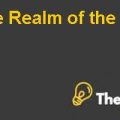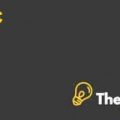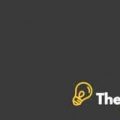Summary
The case introduce Curtis Swann Inc. engaged in the production of cards, including Christmas, Valentines & every day cards. The company was established in the year 1977 in San Francisco, in which, it had created a market niche for itself by positioning its products as high quality products. Which, in turn, had allowed the company to tremendously enhance its revenues in the highly diverse and competitive market. It was assessed that, the three largest companies namely hallmark, American greetings & Gibson controlled almost 40%, 35% and 11% of the share in the market. Whereas, the rest of the 15 to 20% was fragmented among various industries engaged in the market. However, it can be assessed that, Curtis Swann had increased its revenues to $360,000 in annual sales by the year 1980. Additionally, the future looked bright for the company, attributed to its use of high quality material and its effective SOPs developed by its senior management. Moreover, the case illustrates a situation ,in which, the marketing and sale head Ruth Levison was considering and compelling the company’s board of directors to start producing 5 x 7 cards instead of standard 4 x 6 card it was producing in the market. Ruth believed that, appeal of 5 x 7 card size would increase,due to which, the company could gain significant revenues from its sales and enhance its economies of scales. This, in turn, would give the company a competitive edge over its competitors and allow themselves to fend-off any attacks from competitors in the future.
Analysis
According to the data given in the case and with the help of relevant assumptions, would enable the management to determine the production cost of 5 x 7 cards with respect todifferent batch sizes.Initial design cost and die purchase cost was taken as a capital expenditure, which would not be added to the total cost of production. Furthermore, the cost of sheet, color separation cost, stripping/printing cost, embossing cost and overhead, which added to the total production cost. It was assumed that, these overhead expenses would be incurred due to the production of 5 x 7 card sizes. It enabled them to determine the production cost per batch and the production cost per unit. It can be assessed that, as the batch size increased the cost of production per batch deceased, attributed to the same overhead that would be charged irrespective of any batch size produced.
Furthermore, the annual sale demands were estimated from the data provided in the case. It was given that, 20% of the products would be sold between 65,000 to 85,000 and 60% of the products would be sold between 35,000 to 40,000. Whereas, the remaining 20% would account for 5000 units. Therefore, an average was taken of each of these sales categories to estimate the total sales demand amounting to 117,500 annually.Similarly, dividing the sales demand by the amount of production batch, helped to determine the number of batches that would be produced under each batch
Curtis Swan Harvard Case Solution & Analysis
Summary
The case introduce Curtis Swann Inc. engaged in the production of cards, including Christmas, Valentines & every day cards. The company was established in the year 1977 in San Francisco, in which, it had created a market niche for itself by positioning its products as high quality products. Which, in turn, had allowed the company to tremendously enhance its revenues in the highly diverse and competitive market. It was assessed that, the three largest companies namely hallmark, American greetings & Gibson controlled almost 40%, 35% and 11% of the share in the market. Whereas, the rest of the 15 to 20% was fragmented among various industries engaged in the market. However, it can be assessed that, Curtis Swann had increased its revenues to $360,000 in annual sales by the year 1980. Additionally, the future looked bright for the company, attributed to its use of high quality material and its effective SOPs developed by its senior management. Moreover, the case illustrates a situation ,in which, the marketing and sale head Ruth Levison was considering and compelling the company’s board of directors to start producing 5 x 7 cards instead of standard 4 x 6 card it was producing in the market. Ruth believed that, appeal of 5 x 7 card size would increase,due to which, the company could gain significant revenues from its sales and enhance its economies of scales. This, in turn, would give the company a competitive edge over its competitors and allow themselves to fend-off any attacks from competitors in the future.
Analysis
According to the data given in the case and with the help of relevant assumptions, would enable the management to determine the production cost of 5 x 7 cards with respect todifferent batch sizes.Initial design cost and die purchase cost was taken as a capital expenditure, which would not be added to the total cost of production. Furthermore, the cost of sheet, color separation cost, stripping/printing cost, embossing cost and overhead, which added to the total production cost. It was assumed that, these overhead expenses would be incurred due to the production of 5 x 7 card sizes. It enabled them to determine the production cost per batch and the production cost per unit. It can be assessed that, as the batch size increased the cost of production per batch deceased, attributed to the same overhead that would be charged irrespective of any batch size produced.
Furthermore, the annual sale demands were estimated from the data provided in the case. It was given that, 20% of the products would be sold between 65,000 to 85,000 and 60% of the products would be sold between 35,000 to 40,000. Whereas, the remaining 20% would account for 5000 units. Therefore, an average was taken of each of these sales categories to estimate the total sales demand amounting to 117,500 annually.Similarly, dividing the sales demand by the amount of production batch, helped to determine the number of batches that would be produced under each batch.
| Sales Forecast Curtis Swann | |||||||
| Production Runs | 5,000 | 10,000 | 15,000 | 20,000 | 25,000 | 30,000 | |
| Sales Forecast | Percentage | Units produced | |||||
| Good units sales | 20% | 75,000 | |||||
| Average Unit Sales | 60% | 37,500 | |||||
| Other units sales | 20% | 5,000 | |||||
| Total | 100% | 117,500 | |||||
This is just a sample partical work. Please place the order on the website to get your own originally done case solution.












